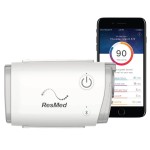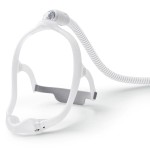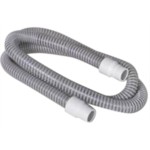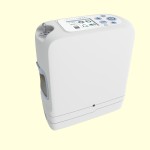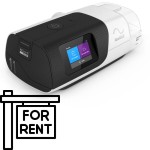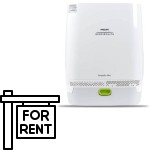Delivery devices for oxygen therapy
Supplemental oxygen is either manufactured, bottled, and delivered by a medical gas company, or is produced at home. Most people requiring supplemental oxygen need both a supply of bottled oxygen, and a device called a concentrator to make oxygen at home.
The medical gas company provides oxygen in small oxygen tanks or large tanks of liquid oxygen. Oxygen delivered this way is called “medical grade.” Once the tank is empty, it must be returned and replaced. Liquid oxygen systems allow the patient to fill a small canister with oxygen. Once the liquid oxygen storage tank is empty, though, the gas company must refill it. When using tanks and liquid canisters, patients and caregivers must continually pay careful attention to the amount of oxygen left and determine how much longer it will last. Tanks and canisters must also be monitored for leaks that cause the gas to be used up much more quickly than anticipated.
Oxygen concentrators continuously produce oxygen in the home, eliminating concerns about running out unexpectedly before the next tank delivery. Oxygen concentrators are sometimes called oxygen generators. Oxygen concentrators pull in air from the environment. The air passes through filters and a sieve bed that scrubs out the nitrogen. The air around us is 21% oxygen, 78% nitrogen, and 1% a mix of argon and carbon dioxide (and some other trace gases). By eliminating nitrogen, the concentrator continually collects concentrated oxygen. Stationary oxygen concentrators process air about ten times faster than portable oxygen concentrators. All oxygen concentrators require electricity.
The oxygen delivered in the hospital is 100% pure oxygen. Medical-grade oxygen delivered from tanks or liquid systems is close to 99% oxygen. Oxygen-enriched gas delivered by concentrators is closer to 85%-95% oxygen. The reduced oxygen percent is because the scrubbing of nitrogen is not 100% perfect. Functionally, this may mean that a patient needs a little bit higher flow rate from a concentrator than they need in the hospital or from a tank of oxygen.
Oxygen therapy supplies
Supplemental oxygen is delivered to the patient through a nasal cannula or a mask via tubing attached to the concentrator or tank. Supplementary oxygen can be bled into a CPAP or BiPAP machine with a small adapter placed between the CPAP machine and the CPAP hose that goes to the patient's sleep apnea mask. Masks, cannulas, and CPAP oxygen adapters all work with oxygen concentrators and oxygen tanks. Extra-long tubing is available to allow people to move about their house while wearing supplemental oxygen. Humidification to prevent dryness in the nose may be provided by attaching specially made bottles of sterile water to the oxygen tanks or concentrators.
Monitoring oxygen therapy
In the hospital, supplemental oxygen is almost always delivered with a continuous flow. Devices for home use may have settings for both continuous flow oxygen and pulse dose flow. Pulse dose flow conserves the supplemental oxygen by only providing it during inhalation.
Pulse dose settings vary from device to device. The pulse dose a patient needs on a tank may differ from the stationary concentrator. Similarly, the optimal pulse dose on a stationary concentrator may not match the optimal setting on a portable oxygen concentrator. A pulse oximeter helps to determine whether the patient has the right flow setting for them.
Pulse oximeters fit over the finger and measure the levels of oxygen in the blood. The pulse oximeter reports a value known as the SpO2 or oxygen saturation level. The physician should tell the patient and caregivers what an appropriate pulse oximetry value is for that patient. Oxygen saturation levels may drop during activity and sleep. Consequently, some people need higher flow or pulse dose settings during those times.
Pulse oximetry is a vital tool in monitoring oxygen efficacy. Other signs that a patient may need extra oxygen are changes in the effort of breathing, cognition, dizziness, and fatigue.
Backup plans for oxygen therapy
Uninterrupted delivery of supplemental oxygen is imperative. There must be a backup plan for oxygen delivery in the case of device failures or power outages as well as a plan for travel. The typical home setup for oxygen therapy at a minimum includes both a stationary concentrator and oxygen tanks for this reason. Some portable oxygen concentrators can run on batteries. It is advisable to know the battery life of portable concentrators and to keep spare batteries and power supplies in case of malfunctions. Patients should also keep spare cannulas, masks, and tubing in case of breakage. Bags are available for transporting portable concentrators as well as oxygen cylinders to the grocery store or physician appointments.
Local emergency services should be notified when a household has a home oxygen user so that in the case of prolonged power outages or other disasters, they know where to triage support first.
